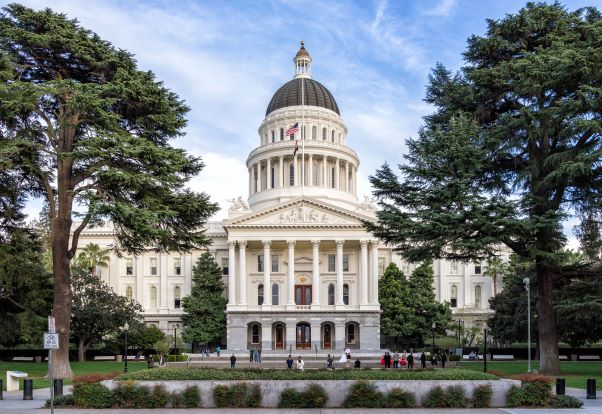The first 2021 meeting of California’s Closing the Digital Divide Task Force on Feb. 2 provided viewers a more in-depth look at some the initial proposals put forth by lawmakers to boost broadband access to students and communities.
“For us, this is one of the highest priorities, and now it’s time to get to work,” said Assemblymember Eduardo Garcia (D-Coachella). “We have exciting proposals [on] making investments in infrastructure, bond initiatives, reforms to existing programs and looking at programs as it relates to affordability. Without a doubt, at the center of all this is our students.”
In addition to legislative solutions, a new cash-incentive program was introduced to help close the digital divide now by State Superintendent of Public Instruction Tony Thurmond and Dr. Gary Michelson, an orthopedic surgeon and philanthropist who co-created Michelson 20MM to promote affordability in higher education.
Thurmond said the California Digital Divide Innovation Challenge is an open call for proposals from the public and private sector’s most ambitious innovators, researchers, entrepreneurs and creative problem-solvers to develop technology and strategic partnerships that will not only help learners right away but remove barriers to success long after the pandemic is over. The $1 million cash prize offering comes from Michelson, Genentech, General Motors and others.
“For too long, profit has gotten in the way of providing the essential internet access our students and families need for success in school and in daily life,” Thurmond said in a statement following the taskforce meeting. “I want to commend our generous partners for stepping up to help infuse $1 million into the next big idea and innovation that could end up changing lives across California for generations.”
More details about the innovation challenge will be announced soon, but those interested in learning more or submitting a proposal can email California Department of Education staff here.
Authors of three new proposals discussed their bills
Three new pieces of legislation were spotlighted during the task force meeting. Senate Bill 4, authored by Sen. Lena Gonzalez (D-Long Beach) would require the Governor’s Office of Business and Economic Development to coordinate with other relevant state and local agencies and national organizations to explore ways to facilitate streamlining of local land use approvals and construction permit processes for projects related to broadband infrastructure deployment and connectivity.
The bill would also secure continuous funding and implement several critically needed reforms to the California Advanced Services Fund program administered by the California Public Utilities Commission to better meet the connectivity needs of families in unserved and underserved areas across the state. Changes to the fund include making communities eligible for grants based on their true internet need, promoting deployment of high-speed broadband, and making it easier for local governments to apply for grants and finance their own infrastructure.
Gonzalez said that expanding access to broadband is a bipartisan issue with extensive support. “We’ve had rural, suburban, urban, Republican, Democrat — everybody knows that digital inclusion is important in their region,” she said. “We need to ensure that consumers — our residents that we represent — see a return on investment with better educational opportunities, better job opportunities and better infrastructure in their neighborhoods with the support of California.”
A second bill, Assembly Bill 34, would place the Broadband for All Act of 2022 on the Nov. 8, 2022, statewide general election ballot. Bill author Assemblymember Al Muratsuchi (D-Torrance) said approval from voters would authorize the issuance of state general obligation bonds to fund increased access to broadband services to unserved and underserved rural, urban, suburban and tribal communities.
Muratsuchi was among the many presenters to suggest that it was time to stop waiting for private internet service providers to take meaningful steps to bring connectivity into the homes of students from low-income and rural communities. “We need to not only go big to address our long-term broadband infrastructure needs, but we also need to think about a paradigm shift,” he said. “While we want to work collaboratively with the private internet service providers, I think there is a tremendous opportunity to take the challenges and the lessons we’re learning from this pandemic to explore further investments in public broadband infrastructure.”
AB 14, authored by Assemblymember Cecilia Aguiar-Curry (D-Winters), would authorize local educational agencies to report their students’ estimated needs for computing devices and internet connectivity adequate for at-home learning to the California Department of Education. The CDE, in consultation with the Public Utilities Commission, would be required to compile and annually post that information on the department’s website.
Aguiar-Curry said the goal is to ensure that grants administered from the California Advanced Services Fund are awarded to applicants who are willing and able to connect households quickly and efficiently, including community anchor institutions, small businesses and employers.
Among other actions, AB 14 would:
- Create a Broadband Bond Financing and Securitization Account to support costs related to financing the deployment of broadband infrastructure by a local government agency or nonprofit organization, including but not limited to, payments of costs of debt issuance, obtaining credit enhancement, and establishment and funding of reserves for the payment of principal and interest on debt.
- Require CASF Infrastructure Grant applications to provide broadband access at speeds of a minimum of 25 megabits downstream and 25 megabits upstream, with a goal of 100 megabits per second downstream.
- Ensure ‘anchor institutions’ defined as schools, community colleges, libraries, hospitals, health clinics, public safety entities, government buildings and community organizations are eligible for CASF grants on a fair cost-sharing basis for interconnection along the path of deployment.





